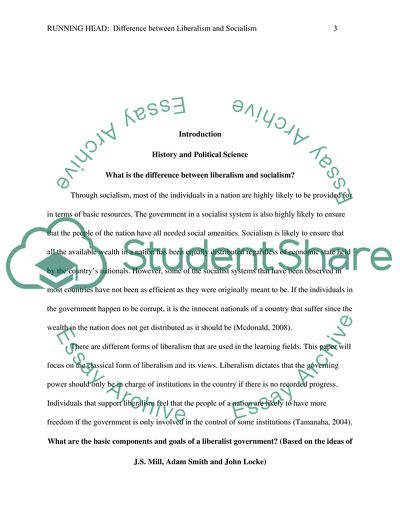Cite this document
(Difference between Liberalism and Socialism Essay Example | Topics and Well Written Essays - 1750 words, n.d.)
Difference between Liberalism and Socialism Essay Example | Topics and Well Written Essays - 1750 words. https://studentshare.org/history/1786765-what-is-the-difference-between-liberalism-and-socialism
Difference between Liberalism and Socialism Essay Example | Topics and Well Written Essays - 1750 words. https://studentshare.org/history/1786765-what-is-the-difference-between-liberalism-and-socialism
(Difference Between Liberalism and Socialism Essay Example | Topics and Well Written Essays - 1750 Words)
Difference Between Liberalism and Socialism Essay Example | Topics and Well Written Essays - 1750 Words. https://studentshare.org/history/1786765-what-is-the-difference-between-liberalism-and-socialism.
Difference Between Liberalism and Socialism Essay Example | Topics and Well Written Essays - 1750 Words. https://studentshare.org/history/1786765-what-is-the-difference-between-liberalism-and-socialism.
“Difference Between Liberalism and Socialism Essay Example | Topics and Well Written Essays - 1750 Words”. https://studentshare.org/history/1786765-what-is-the-difference-between-liberalism-and-socialism.


